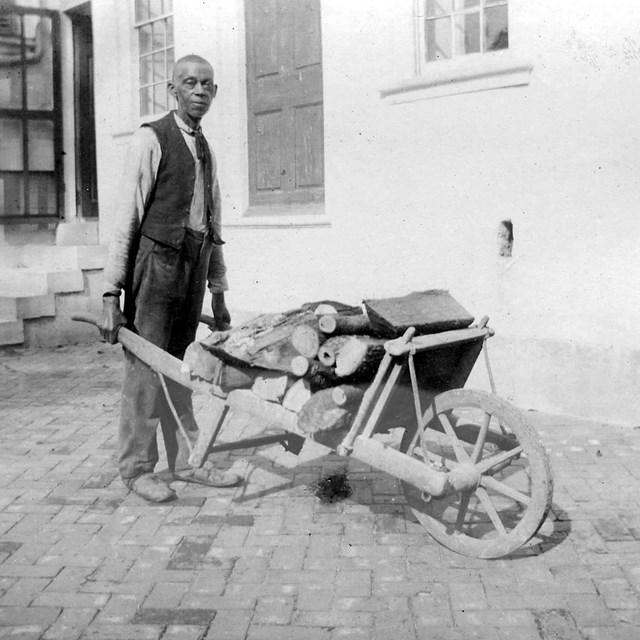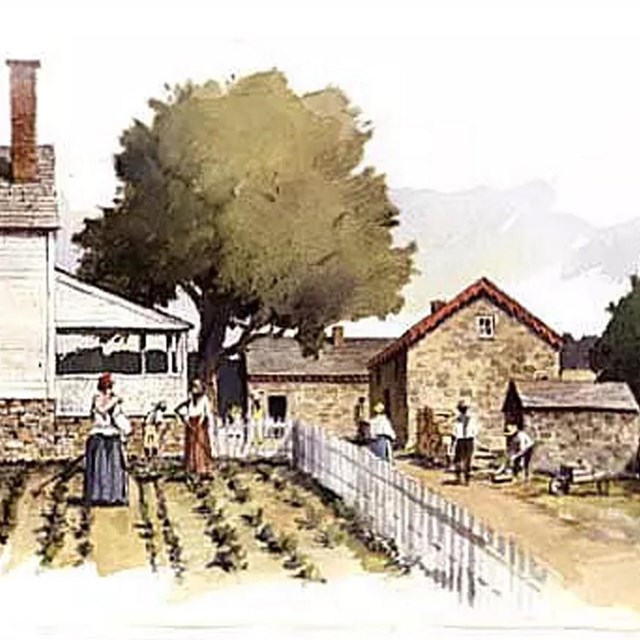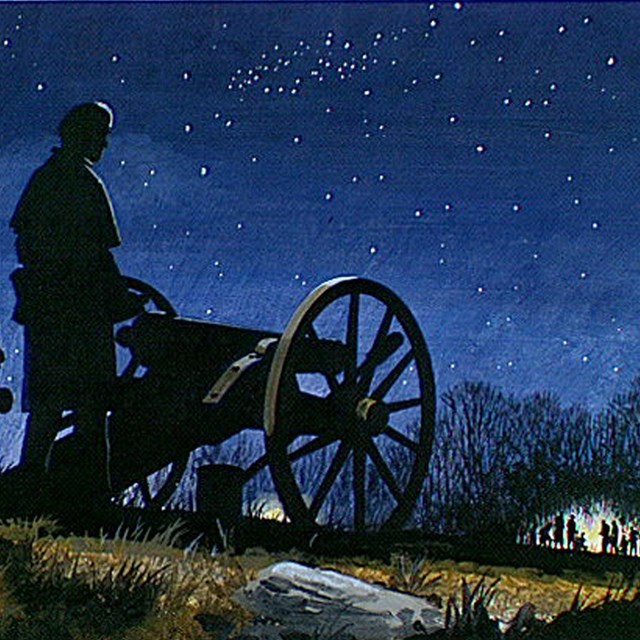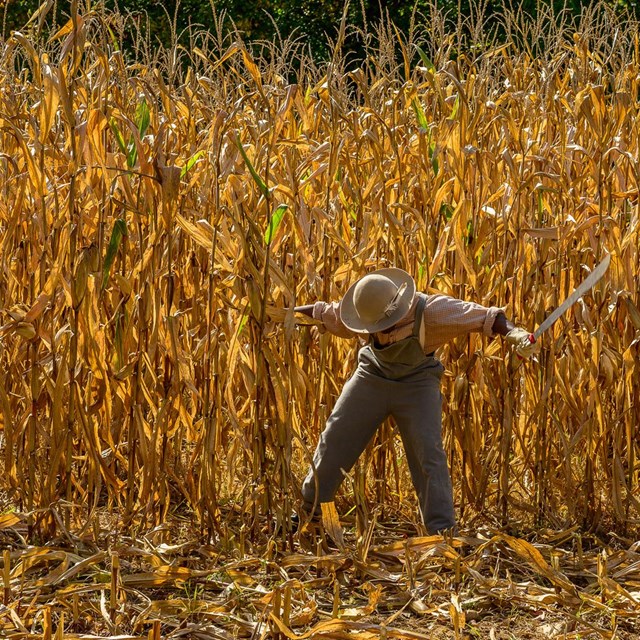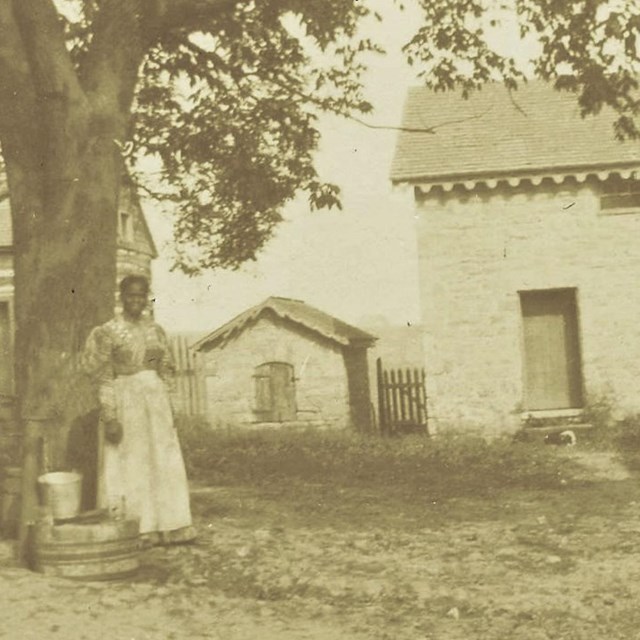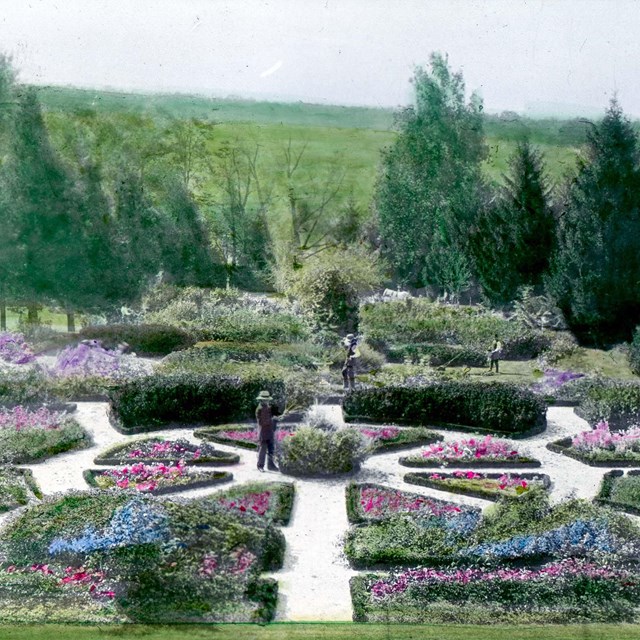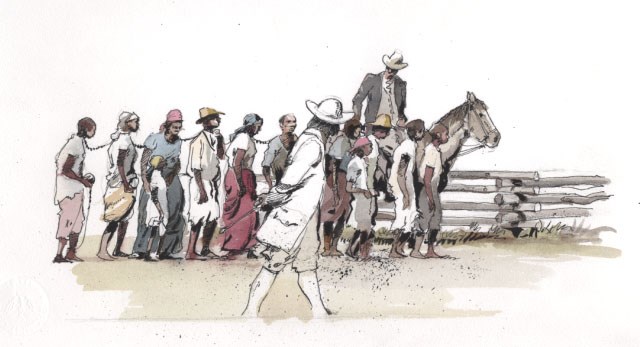
NPS/Harpers Ferry Center In spring of 1841, John Ridgely purchased 23 individuals in 3 nuclear families (Gully, Davis and Humphries) of enslaved workers from “Oakland,” the estate of James L. Hawkins, for a total cost of $7,267.46. Hawkins was a banker who became notorious for embezzling huge sums of money (over $100,000) in 1840. Settling his debts required him to sell the enslaved people who worked on his plantation in southwestern Frederick County. It was common for enslavers to sell or rent their enslaved people to pay off debts. The Davis FamilyWilliam/Bill and Susan/Sukey Davis came to Hampton with their seven young children (Lloyd, Harriet, Ellen, Louis/Lewis, Anne, Caroline, and William Jr.) Two more children (Tilghman and Susan) were later born at Hampton. Some of the Davis children (Louis/Lewis, Anne, Caroline) continued to work for the Ridgelys after emancipation, and descendants of others who left Hampton are still living in the Towson area today. The Humphries FamilyEdward/Ned Humphries, his wife Peggy and five children: John, George, Eliza Jane, Mary, and Eloise, were all farm workers. All of the younger children appear on Didy’s Christmas Gift list, although Eloise received nothing in 1851 “on account of bad behavior.” Eloise later went by Louisa Humphries and in 1861 became the second wife of head waiter Mark Posey, with whom she had three children. Mark and his first wife, Rachel also had children, the first of whom was Rebecca, one of the few young women able to successfully seek her freedom alone in 1852. Another daughter, Alica Posey was recorded by Didy Ridgely on the Christmas Gifts list as being her “first Protégé.” The Gully FamilyThe only daughter to Jim and Catherine (Kitty) Gully was Esther/Hester (1829-lv. 1890). Almost immediately upon her arrival at Hampton in 1841, Esther adopted the surname Baker and is recorded with this name in Hampton records. She had a son, Henry Baker, born in June 1849. Learn More
|
Last updated: August 19, 2024

